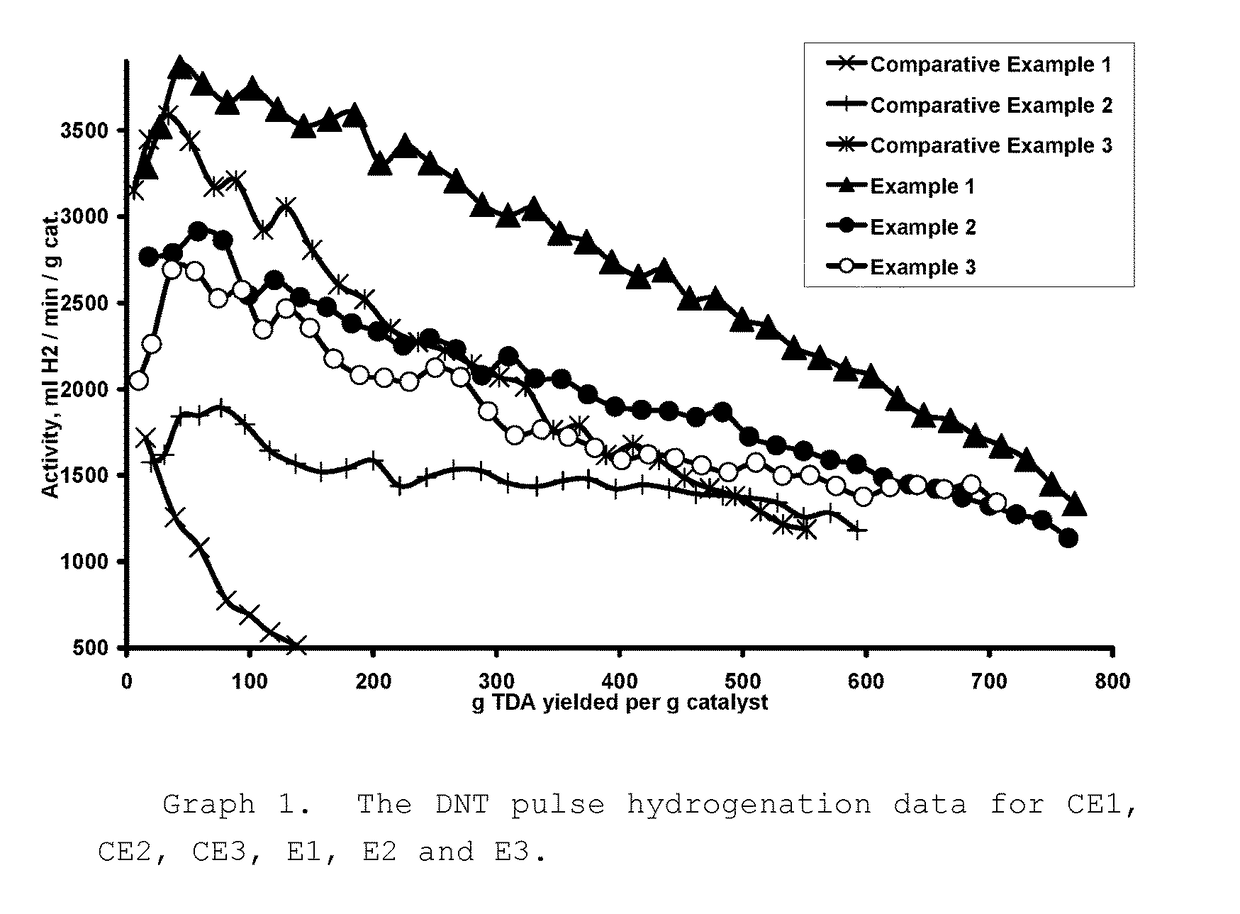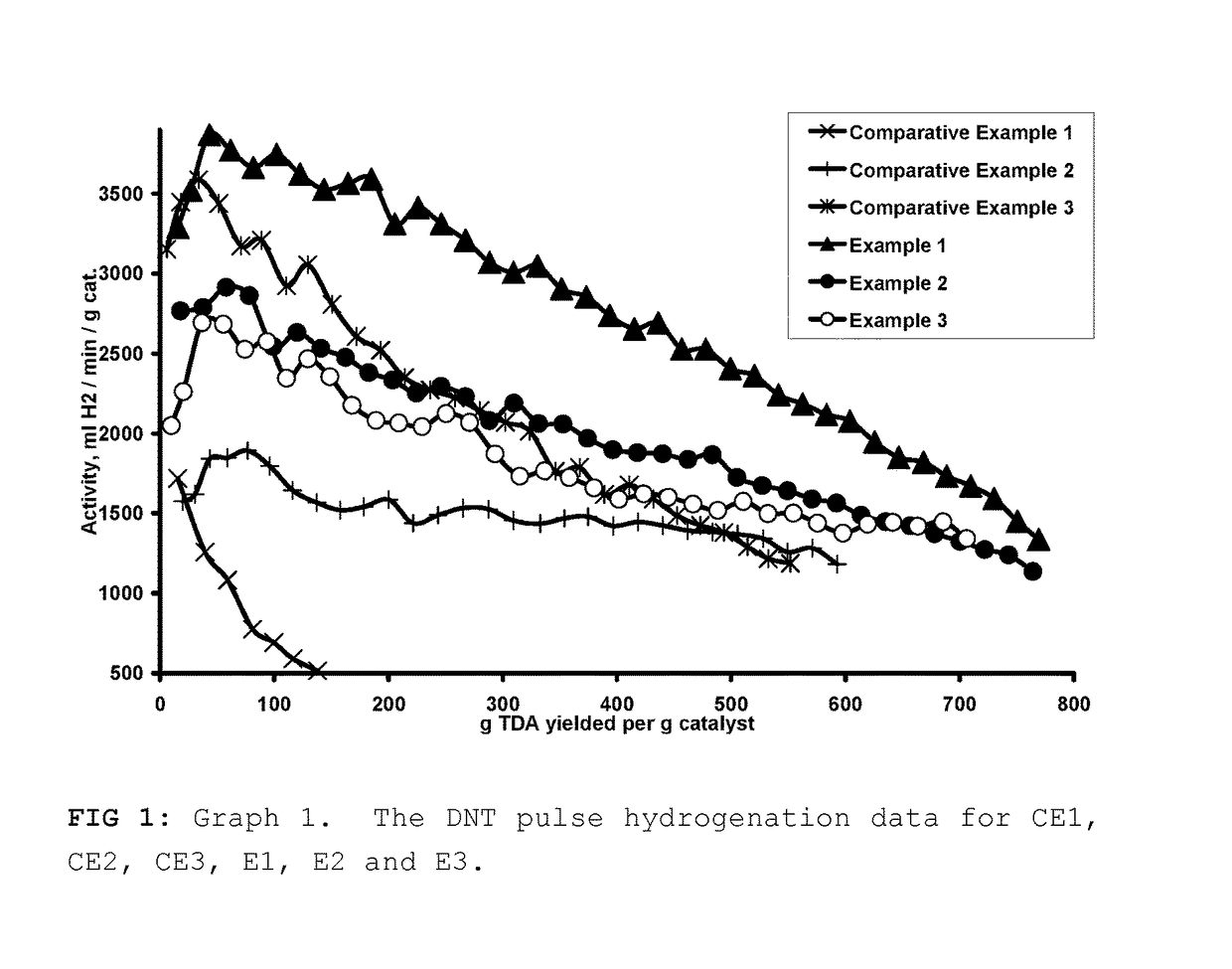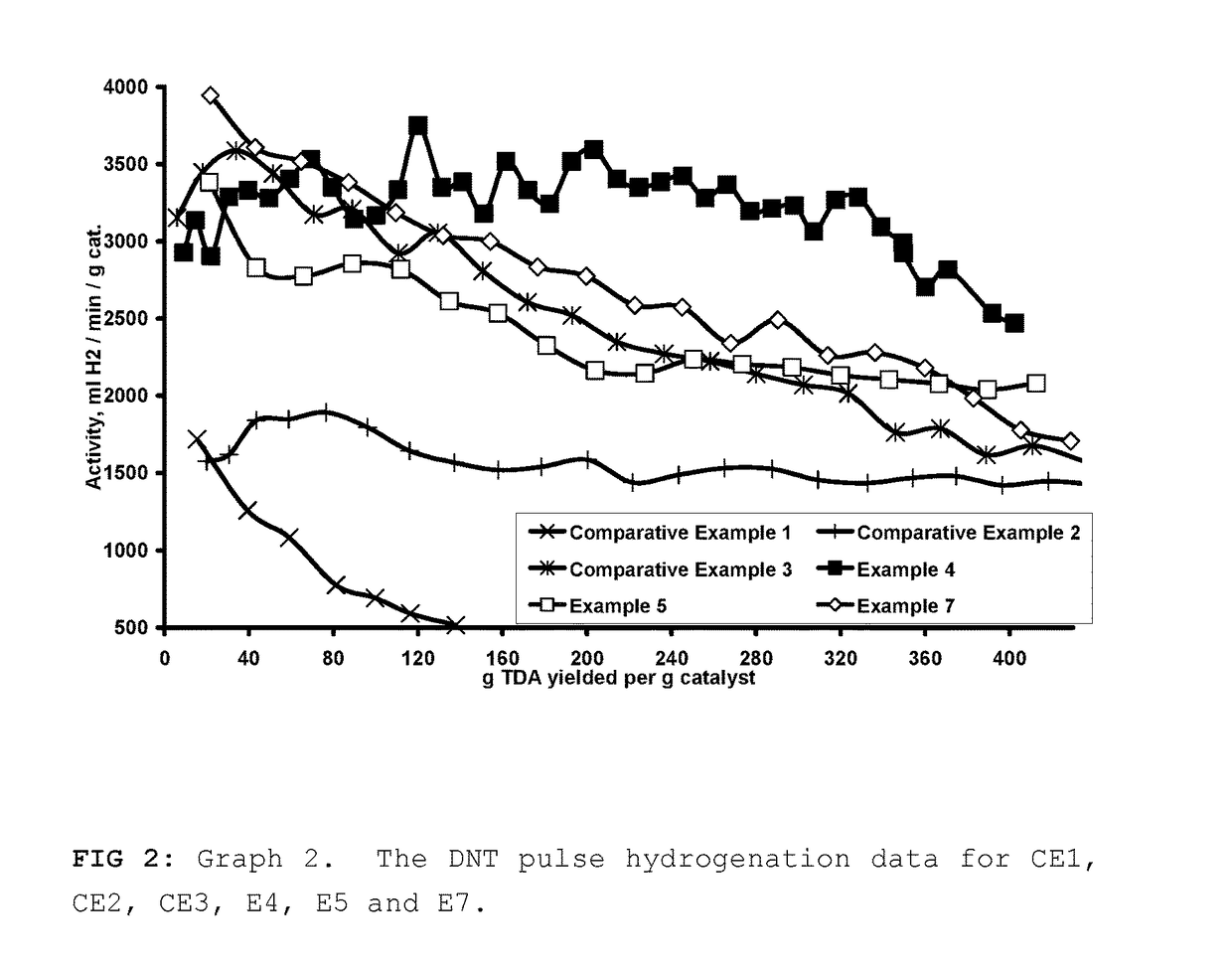Activated base metal catalysts
a technology of active base metals and catalysts, which is applied in the preparation of amino compounds, metal/metal-oxide/metal-hydroxide catalysts, and physical/chemical process catalysts, etc., can solve the problems of reducing heat transfer efficiency, affecting the production efficiency of catalysts, and causing system blockages,
- Summary
- Abstract
- Description
- Claims
- Application Information
AI Technical Summary
Benefits of technology
Problems solved by technology
Method used
Image
Examples
application example 1
The Pulse Hydrogenation of Dinitrotoluene (DNT) to Toluenediamine (TDA)
[0051]DNT is typically hydrogenated in an industrial setting via a continuous mode, where the DNT feed rate is slow enough to keep its concentration low enough so that it doesn't poison the catalyst or become a safety hazard. This means that the hydrogenation rate will be dependent of the DNT feed rate. The goal of our pulse hydrogenation method was to keep the DNT concentration low enough so that it would be comparable to the industrial setting while measuring the activity of the catalyst. We were able to do so by pulsing in the DNT feed at a rate that was slightly faster than the rate of hydrogenation so that we could measure catalyst activity while keeping the time of the slight excess of DNT to a minimum. It was also decided to use the reaction pressure and temperature conditions similar to those described in U.S. Pat. No. 4,224,249, U.S. Pat. No. 6,423,872 and U.S. Pat. No. 6,005,143.
[0052]The pulse hydrogen...
application example 2
The Batch Hydrogenation of Nitrobenzene to Aniline
[0053]The low pressure hydrogenation of nitrobenzene was carried out over 1.5 grams of catalyst in 110 ml of a 9.1 wt % nitrobenzene ethanolic solution at 25° C. and atmospheric pressure. A baffled glass reactor outfitted with a bubbling stirrer spinning at 2000 rpm was used for these hydrogenations. The results of these hydrogenations are listed in table 1.
[0054]
TABLE 1The batch nitrobenzene hydrogenation data.Nitrobenzene ActivityCatalystml H2 / min / gram catalystComparative Example 161Comparative Example 249Example 170Example 267Example 475Example 596Example 6103Example 792
application example 3
The Determination of the Catalyst's Ability to Form Nickel Aluminates (e.g., Takovite)
[0055]U.S. Pat. No. 6,423,872 describes a method for the determination of the catalyst's ability to form nickel aluminates (e.g., takovite). This method involved putting the catalyst together with TDA at the temperature of 150° C. for 1 month. The tube was then opened and the catalyst was examined by X-Ray diffraction. It was found that the compound built up on the catalyst was takovite and its structure was shown by X-Ray diffraction to be the same as that of the deposits observed on the walls of an industrial DNT hydrogenation reactor and its peripheral equipment.
[0056]We performed a similar test for our studies here.
[0057]To determine the catalyst's ability to form takovite, 0.2 grams of the catalyst was placed together with 3.5 grams of a 63 wt % TDA and 37 wt % water mixture in a sealed tube for 3 weeks at 150° C. After the 3 weeks, the catalyst was removed and its takovite residues were analy...
PUM
| Property | Measurement | Unit |
|---|---|---|
| temperature | aaaaa | aaaaa |
| specific surface area | aaaaa | aaaaa |
| specific surface area | aaaaa | aaaaa |
Abstract
Description
Claims
Application Information
 Login to View More
Login to View More - R&D
- Intellectual Property
- Life Sciences
- Materials
- Tech Scout
- Unparalleled Data Quality
- Higher Quality Content
- 60% Fewer Hallucinations
Browse by: Latest US Patents, China's latest patents, Technical Efficacy Thesaurus, Application Domain, Technology Topic, Popular Technical Reports.
© 2025 PatSnap. All rights reserved.Legal|Privacy policy|Modern Slavery Act Transparency Statement|Sitemap|About US| Contact US: help@patsnap.com



